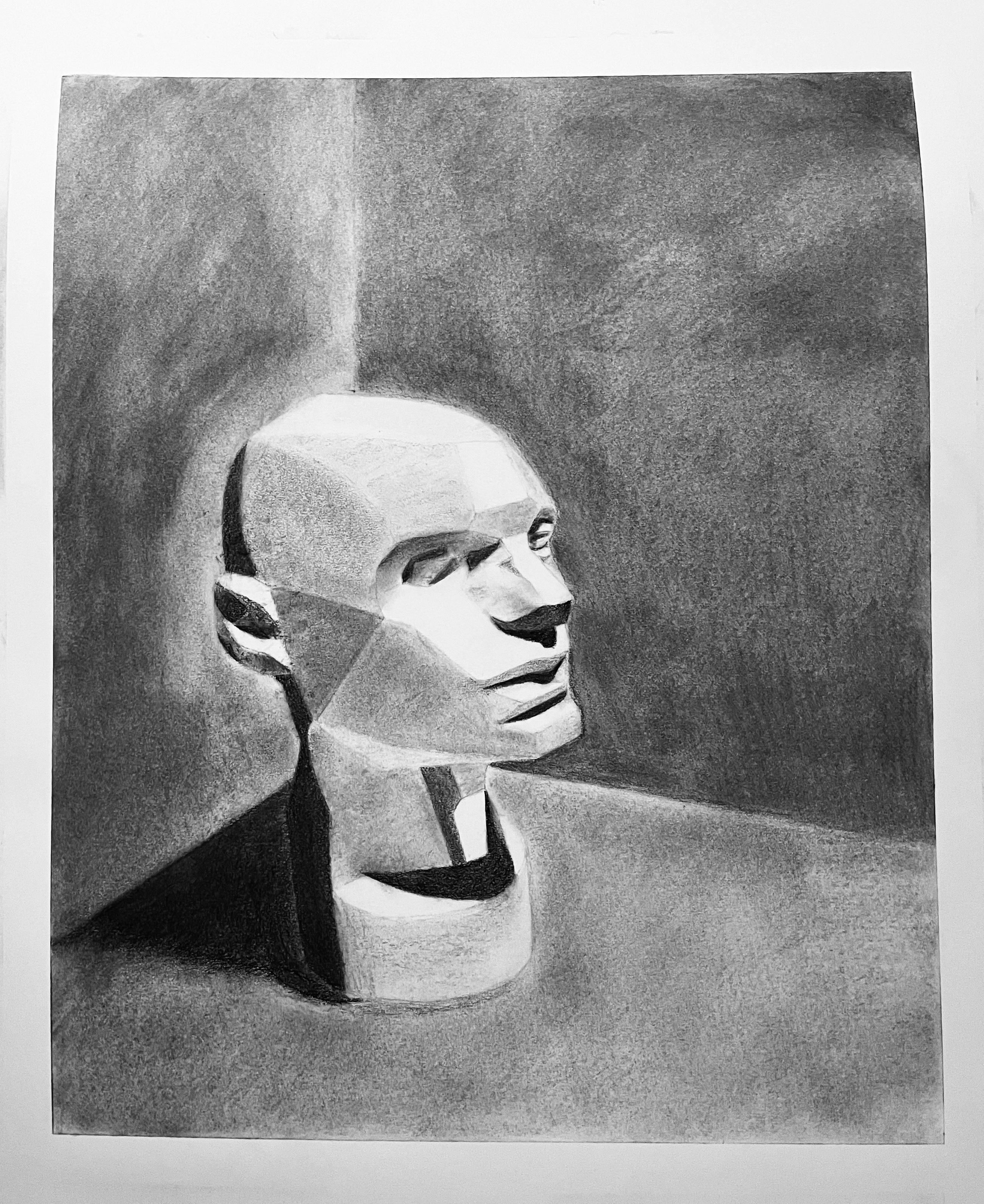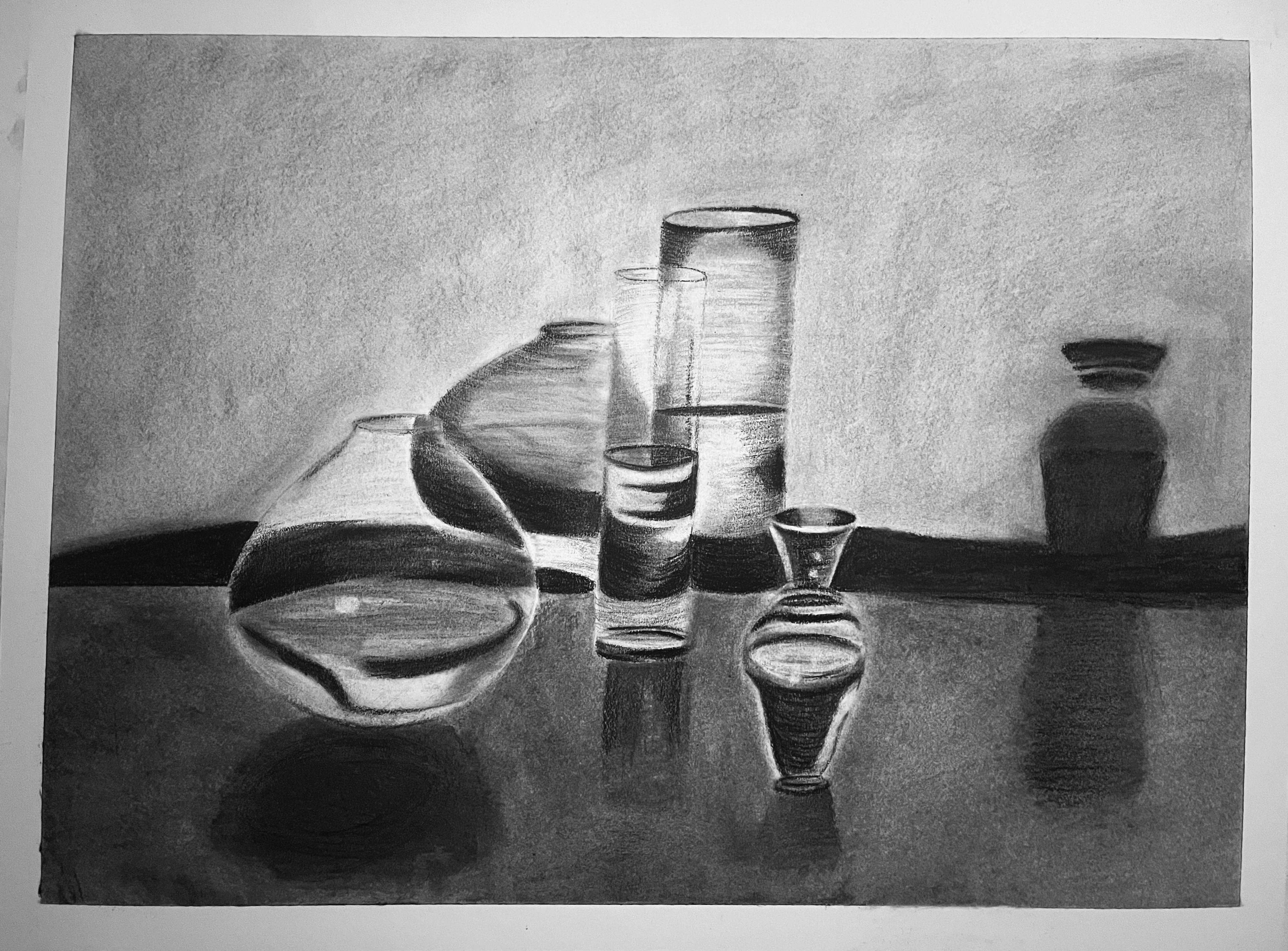
Project overview
We’ll start with a clean block-in of the head and features, commit to a simple value design, then model with controlled blends. Final accents (eyes, nostrils, lip line) snap the likeness into focus.
Tools & papers
- Vine charcoal (layout), compressed charcoal (darks)
- Charcoal pencils (HB–4B)
- Blending stumps / soft brush / tissue
- Kneaded & vinyl erasers
- Paper: smooth drawing paper or toned paper
- Light workable fixative
Setup & reference
- Choose a photo with clear light direction and simple background.
- Work at a slight angle; keep hands off the drawing area.
- Decide your focal area (usually eyes) before you start modeling.
Step-by-step
Block-in the head
Light, simple shapes for cranium and jaw; add center line, brow/eye/nose/chin guides. Keep it adjustable.
Place the features
Indicate eyes, nose, mouth with straight, angular lines. Look for angles and distances, not eyelash details.
Group the shadows
Mass in eye sockets, under-plane of nose, upper lip shadow, and cast shadow of head/neck. Think big graphic shapes.
Establish light family
Keep lights clean (mostly paper). Reserve brightest accents for last. Start soft halftones toward the core shadow.
Model the forms
Blend with stump/brush in the direction of form. Re-state edges with pencil; keep eyes crisp, hair softer.
Accent & unify
Drop the deepest darks at the focal area (lash line, nostrils, lip crease). Unify large planes with gentle passes; fix lightly.
Tips
- Check proportions by flipping the page or stepping back often.
- Edge variety sells form—reserve the sharpest edges near the eyes.
- Keep a clean stump for lights and another for darks.
Troubleshooting
- Flat face: Shadow grouping is patchy—reconnect big shadow shapes before modeling.
- Muddy lights: You blended the paper whites—lift with kneaded eraser and re-state carefully.
- Dead eyes: Missing accents—sharpen upper lash line and add a tiny specular highlight.
